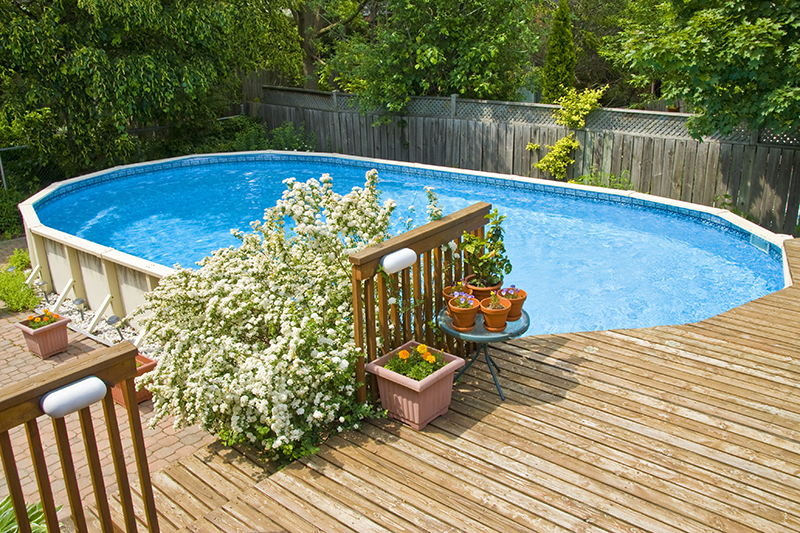Nothing typifies relaxation more than a swimming pool. For some it is an image of fortune, however, for others a pool is basically a fun approach to get activity, unwind, chill and accumulate with loved ones. Whatever your rationale may be, putting in an over-the-ground pool has the bid of being less costly and less changeless than introducing one of its in-ground partners. That doesn’t mean, then again, that an over-the-ground pool requires any less thought and making arrangements for its area, size, and operation, or its progressing consideration and support.
In case you’re considering putting in an over-the-ground pool, utilize this manual to help you arrange the essentials.
Siting Your Pool
It is imperatively critical to pick the right area for your pool. The main thing you ought to do is check your neighborhood construction regulations and check whether the pool needs to be a sure separation from property lines, septic tanks, and streets. You will likewise need to dodge underground links, pipes, and roots, and also overhead power lines, trees, and overhangs. At the point when picking a site, consider the amount of security you need, and how simple it will be to regulate kids.
How you will secure the pool from meandering little children and pets, and how the pool will look in your favored area. Additionally, consider close-by trees. Trees give welcome shade, yet they might additionally keep your pool water cooler than alluring all through the sunny season. Since trees drop leaves, blooms, and other natural material, they can additionally — relying upon how far into the fall you utilize your pool — be an aggravation that dirties the water and influences its synthetic offset.
Preparing the Site
The pool needs to be introduced on level ground, so if your site is slanted, you will need to scrape out the territory to make it level. This may take simply a scoop, or you may need to get a Bobcat or a comparative machine to sufficiently set up the site. Whatever the case, the pool ought to be introduced on soil that hasn’t been treated with any petroleum-based chemicals, and it shouldn’t be based straightforwardly on grass, cement, black-top, tar paper, peat greenery, rock, mulch, or wood.
On the off chance that it assists with leveling, you can sink a piece of the pool 12 to 18 inches into the dirt. Since you are managing loads of dampness, it is likewise a decent thought to treat the range where the pool is running with a non-petroleum-based fungicide. Investing somewhat additional time in preparing the site could spare you some significant migraines not far off.
Do-It-Yourself Round Above-Ground Swimming Pool Installation – 1 of 2 – VIDEO
Pumps and Channels
To keep the water clean and coarse, you will require a pump and channel for your pool. The size and limit of these units fluctuate and will need to match the volume of your pool. If all else fails, consider running with a marginally greater pump than you might suspect you require. It won’t just perform better but additionally all the more proficiently. There are three separate sorts of filtration frameworks accessible: sand, cartridge, and diatomaceous earth (DE). What’s the best decision? That relies on who you ask and what’s most essential to you.
A top-of-the-line cartridge channel is exceptionally productive and simple to keep up with. Obliging minimal more than an intermittent hosing to keep clean. Some swear by DE channels in light of the fact that they deliver the cleanest water conceivably. They could be untidy to clean and do oblige occasional discharging (running the pump in opposite) to work proficiently. Sand channels are straightforward and powerful, yet these additionally oblige discharging and intermittent substitution of sand.
They are the minimum proficient of the three. Do your exploration and converse with individual pool managers in your general vicinity to help you in your choice-making.
Cleaning
Notwithstanding cleaning the water with a physical channel, it is important to treat the water with either chlorine or salt. Chlorine pools are the most widely recognized sorts and oblige utilizing either circle-like chlorine cakes. Saltwater frameworks have been picking up notoriety, however, they do have impediments. Salt is extremely destructive, so if your pool has any metal parts, you’ll in all likelihood need to supplant them. On the off chance that you do run with salt, you will require an all-cap pool, which implies that it will be produced using superb plastic that won’t erode. It is likewise important to include a salt cell, which makes chlorine from the salt through a procedure of electrolysis.
The truth is out, a saltwater pool still uses chlorine to purify and clean the water. The chlorine is available in much lower fixations, notwithstanding, and is not perceptible by scent or taste. All things considered, there’s not a colossal distinction in expense or upkeep, so don’t let these elements alone influence you. There’s a civil argument about the relative benefits of salt frameworks. So do your examination and recognize what you’re getting into before going to this course.
Upkeep
Whether you run with a chlorine- or salt-based framework, there will be a lot of upkeep. You will need to test and confirm the ph and chlorine levels a couple of times each week. For chlorine pools, you’ll additionally need to weigh its vicinity in the water and keep it somewhere around 3 pm.





